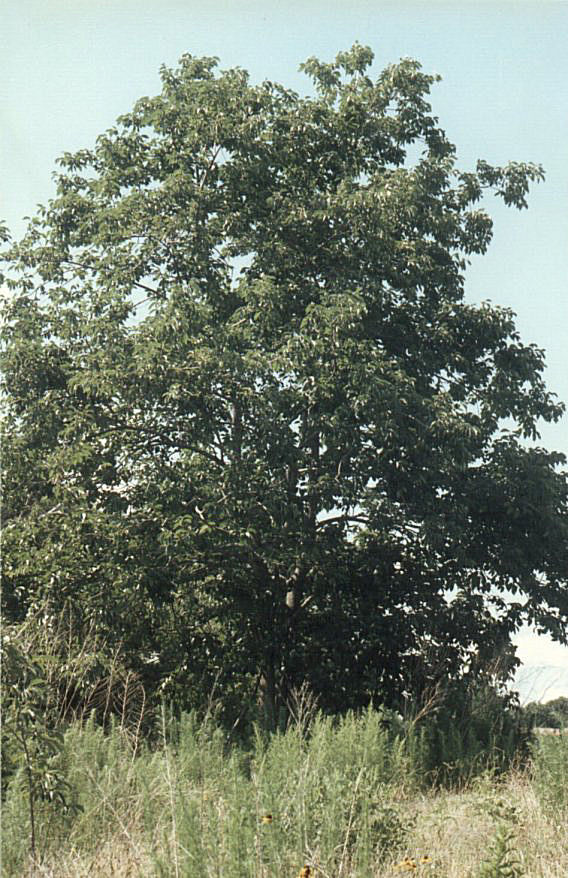| Botanical Name: Diospyros virginiana | |
| Common Name: Common Persimmon |

-
Anatomy
-
Culture
-
Design
Plant Type
Tree
Height Range
12-25', 25-40', 40-60'
Flower Color
Yellow
Flower Season
Spring
Leaf Color
Green
Bark Color
Grey
Fruit Color
Orange
Fruit Season
Fall
Sun
Full
Water
Medium
Growth Rate
Slow
Soil Type
Sandy, Clay, Loam, Rocky, Unparticular
Soil Condition
Average, Rich, Poor, Well-drained, Dry
Soil pH
Acid, Neutral, Basic
Adverse Factors
Invasive
Design Styles
Mediterranean, Ranch, Spanish
Accenting Features
Fall Color, Specimen
Seasonal Interest
Summer, Fall
Location Uses
Background, Shrub Border
Special Uses
Screen, Naturalizing
Attracts Wildlife
Birds
Information by: Stephanie Duer
Photographer: Sandra Chipley
Photographer: Sandra Chipley
-
Description
-
Notes
This American native is grown as a shrubby tree or, in time, large tree, growing from 15 to 50 feet tall and 20 to 35 feetwide. It has an upright and spreading habit with somewhat pendulous branches. Leaves are large, oval, and glossy green, turning to shades of yellow and orange in the fall. Bell-shaped yellow flowers appear in mid spring, but are mostly hidden by the foliage. Large, edible, dark orange fruit ripens in the fall, and tastes best after a frost.
Grow in full sun in well drained, sandy-loam to clay-loam soils. Though fruiting is better with consistent moisture, it is somewhat drought tolerant. Its suckering habit has a tendency to form thickets. Hardy to USDA Zone 4. A good choice for an edible, informal landscape.